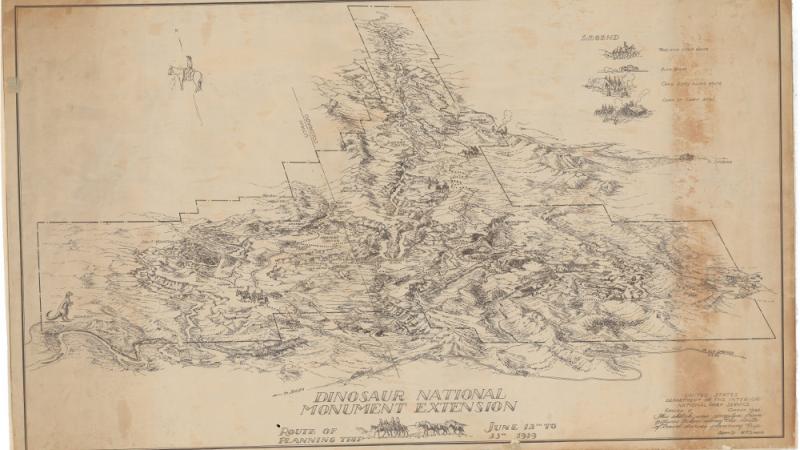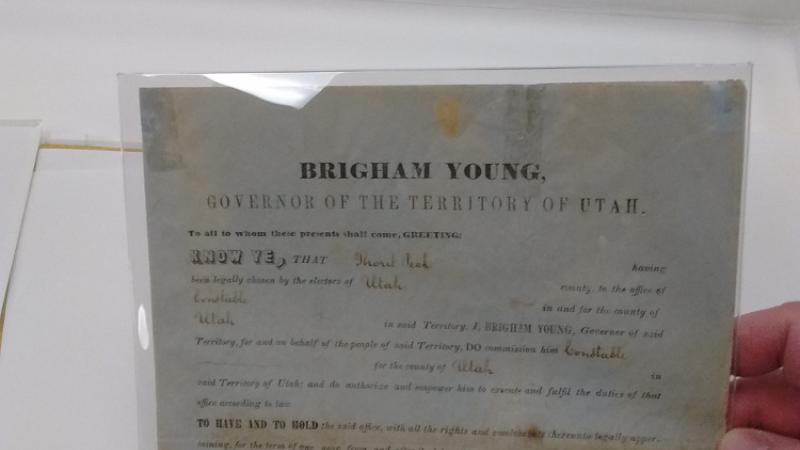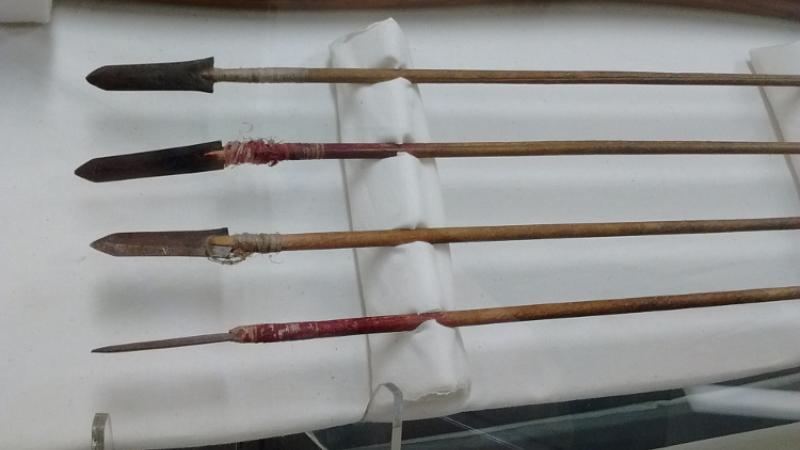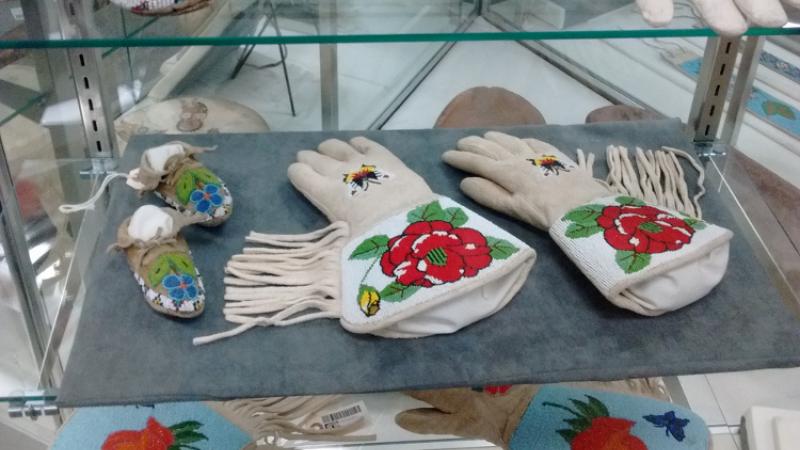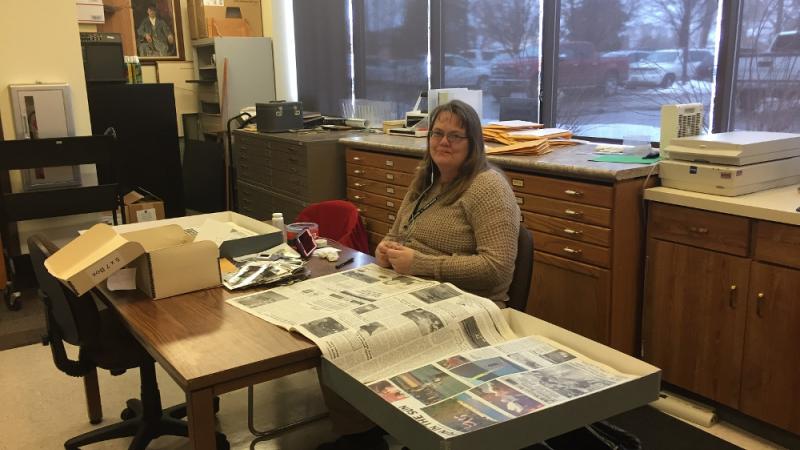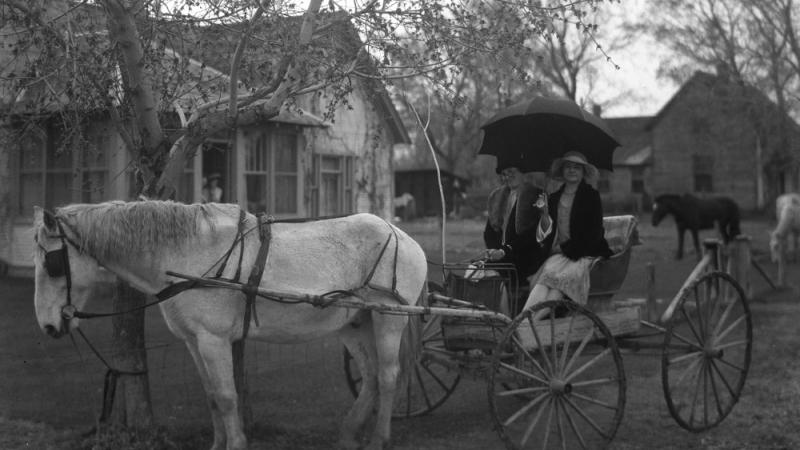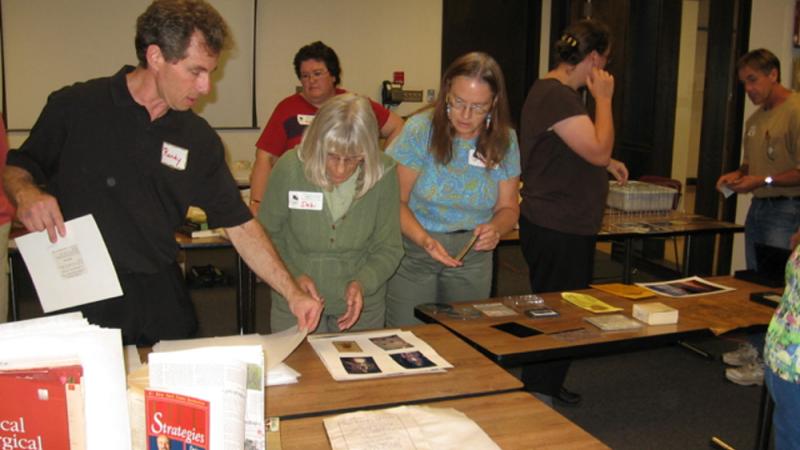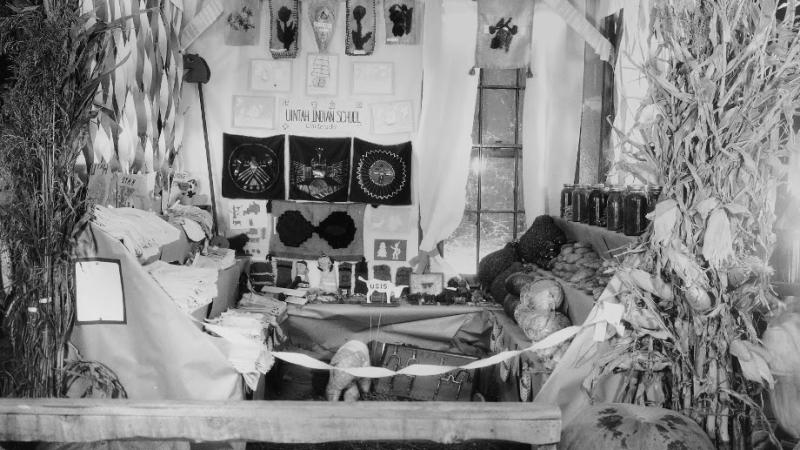50 States of Preservation: Uintah County in Vernal, Utah
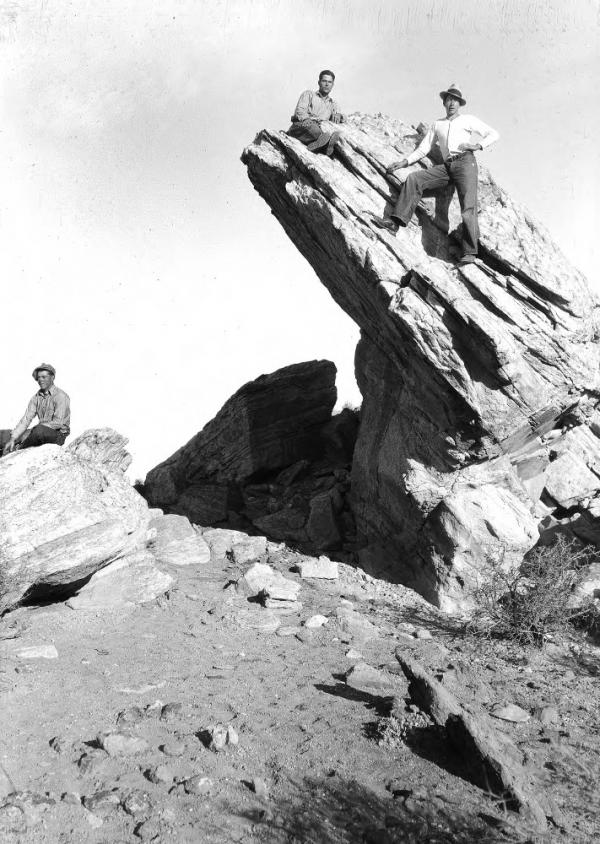
Climbing the Rock Formations. Three unidentified men climb rock formations in Uintah County.
Used by permission from Uintah County Library.

Climbing the Rock Formations. Three unidentified men climb rock formations in Uintah County.
Used by permission from Uintah County Library.
This feature is part of a series we call “50 States of Preservation,” in which we are touring small and mid-sized museums, libraries, historical societies, and other repositories across the country to show how they are helping to preserve the nation’s cultural heritage. Read other entries in the series here.
The Uinta Basin in eastern Utah is isolated during much of the year: from September to as late as May, massive snow storms can make the roads impassable. According to author Doris Karren Burton , a party of surveyors sent by Brigham Young in 1861 thought that the Uinta Valley was “one vast contiguity of waste and measurably valueless, excepting for nomadic purposes, hunting grounds for Indians and to hold the world together.” Contrary to that early assessment, this part of Utah is full of natural and cultural riches. It contains millions of years of Earth’s history, stretching back to the Mesozoic Era. Dinosaur Quarry, part of Dinosaur National Monument, has 800 fossil-filled paleontological sites. Native peoples and then waves of Europeans settled the area, including “miners, Mormons, oil drillers, and outlaws,” according to Samuel Passey, Director of the Uintah County Library.
Local museums and historical centers regularly display artifacts and documents related to the history of the Uintah basin, but despite their relative geographical isolation and susceptibility to earthquakes, fires, floods, and tornadoes, the area’s cultural heritage organizations had little experience with emergency planning and almost no history of working together. “That changed when NEH awarded a Preservation Assistance Grant for Disaster Recovery Training,” said Uintah County Library Director Passey.
The project brought together several local cultural institutions based in Vernal, the county seat, to prepare for possible disasters. One of them is the Utah Field House Museum of Natural History, which attracts over 200,000 visitors each year, including paleontologists and other scholars, students, day care children, tourists, seniors, and other members of the public. The museum has about 30,000 natural history specimens, primarily fossils and rocks from the Uinta Mountains and Uinta Basin, as well as ethnographic materials like Ute bead/leather works and fine art objects. Also participating in the project was the Regional History Center at the Uintah County Library, which holds 20,000 books, 2,200 manuscript collections, 300 oral history interviews, over 300,000 historic images, and a complete run of the local Vernal Express newspaper including over 20,000 photographs. The Library shares over 30,000 of its photographs, which are hosted on the University of Utah digital collections Web site.
With support from NEH’s Division of Preservation and Access, the Uintah County Library helped to organize a regional community of practice for emergency preparedness. University of Utah preservation expert Randy Silverman led two workshops in 2011, in which staff and volunteers from these institutions drafted disaster plans and practiced emergency procedures. “We worked shoulder-to-shoulder to practice drying documents, learning techniques to stabilize damaged items, recognize the signs of mold, and learn key terms to use when communicating with first responders,” explained Samuel Passey. “Most importantly,” he says, “we developed relationships and have met regularly in formal and informal settings since the time of the initial training.” A cache of emergency supplies, stored in an old county jail, means that in the event of a fire, flood, or other emergency, local cultural institutions will have what they need at a moment’s notice. And, based on county-wide collaboration, merging the Uintah County Heritage Museum into the Library Department recently led to “our best three years of visitation ever,” notes Passey.
The project helped build new partnerships and has affected long-term plans and day-to-day business in Uintah County. For this, Passey expresses “thanks to those at the NEH who funded and administered this grant, which has made such a big difference in our community.”
In every state, NEH supports organizations that preserve humanities collections. Preservation Assistance Grants for Smaller Institutions (PAGs) fund projects that help safeguard photographs, letters, documents, prints, moving images, sound recordings, maps, drawings, artworks, textiles, furniture, and artifacts, making them available for future generations. These collections help researchers, educators, and members of the public better understand the complex stories of the various cities, towns, and tribal groups that make up our nation. Since 2000, NEH has made nearly 2,000 Preservation Assistance Grants to small and mid-sized organizations to preserve and care for their humanities collections. In all 50 states, the District of Columbia, and Puerto Rico and the Virgin Islands, PAG awards have funded preservation assessments, purchase of shelving, environmental monitoring equipment, and preservation supplies, and training for staff. Organizations in all states and U.S. territories are eligible to apply, and the program encourages applications from those new to NEH. The next application deadline Preservation Assistance Grants for Smaller Institutions is May 2, 2017. If you have any questions about this grant program, please contact us at @email or 202-606-8570.
